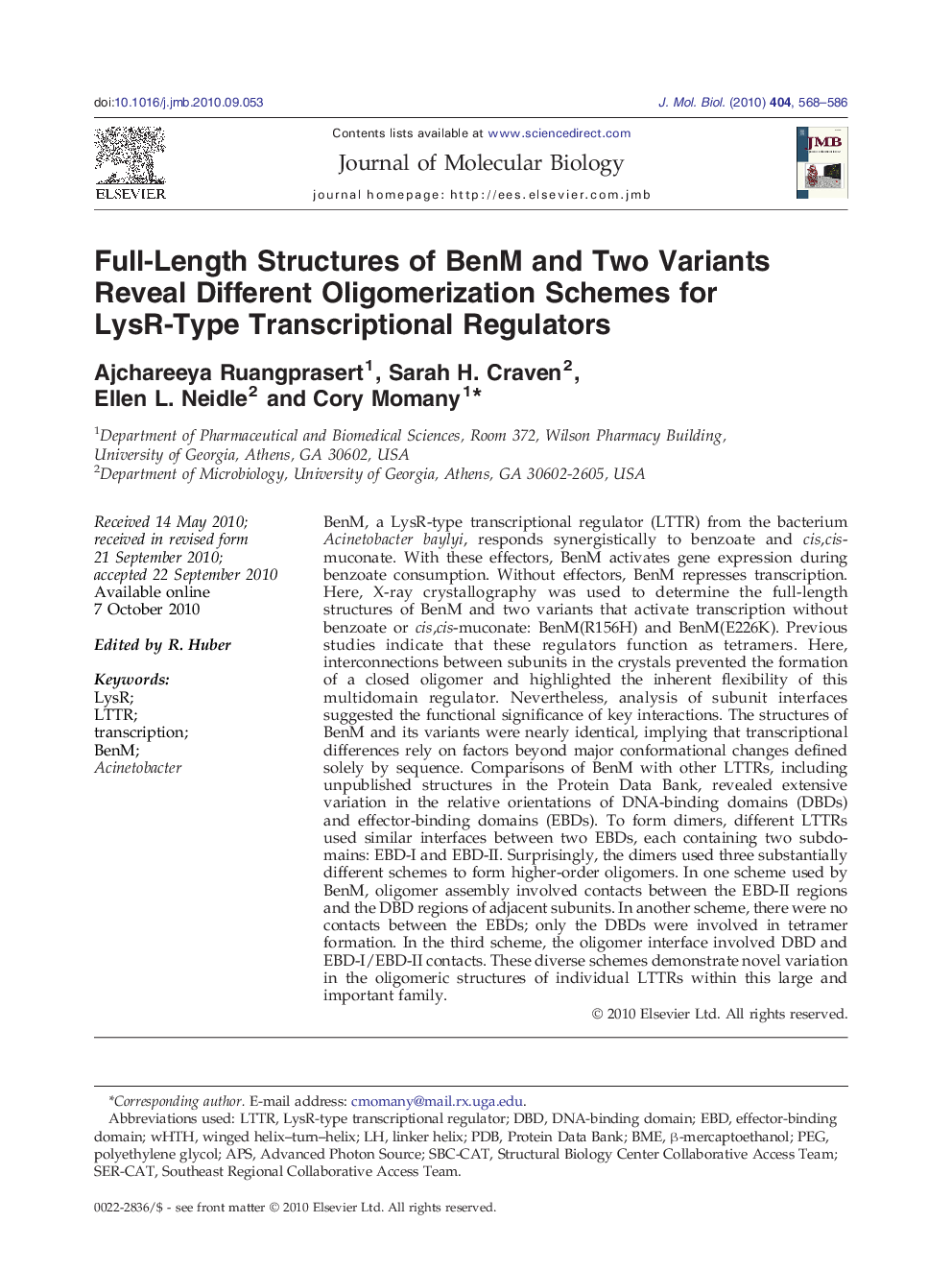| کد مقاله | کد نشریه | سال انتشار | مقاله انگلیسی | نسخه تمام متن |
|---|---|---|---|---|
| 2185508 | 1095985 | 2010 | 19 صفحه PDF | دانلود رایگان |

BenM, a LysR-type transcriptional regulator (LTTR) from the bacterium Acinetobacter baylyi, responds synergistically to benzoate and cis,cis-muconate. With these effectors, BenM activates gene expression during benzoate consumption. Without effectors, BenM represses transcription. Here, X-ray crystallography was used to determine the full-length structures of BenM and two variants that activate transcription without benzoate or cis,cis-muconate: BenM(R156H) and BenM(E226K). Previous studies indicate that these regulators function as tetramers. Here, interconnections between subunits in the crystals prevented the formation of a closed oligomer and highlighted the inherent flexibility of this multidomain regulator. Nevertheless, analysis of subunit interfaces suggested the functional significance of key interactions. The structures of BenM and its variants were nearly identical, implying that transcriptional differences rely on factors beyond major conformational changes defined solely by sequence. Comparisons of BenM with other LTTRs, including unpublished structures in the Protein Data Bank, revealed extensive variation in the relative orientations of DNA-binding domains (DBDs) and effector-binding domains (EBDs). To form dimers, different LTTRs used similar interfaces between two EBDs, each containing two subdomains: EBD-I and EBD-II. Surprisingly, the dimers used three substantially different schemes to form higher-order oligomers. In one scheme used by BenM, oligomer assembly involved contacts between the EBD-II regions and the DBD regions of adjacent subunits. In another scheme, there were no contacts between the EBDs; only the DBDs were involved in tetramer formation. In the third scheme, the oligomer interface involved DBD and EBD-I/EBD-II contacts. These diverse schemes demonstrate novel variation in the oligomeric structures of individual LTTRs within this large and important family.
Graphical AbstractFigure optionsDownload high-quality image (184 K)Download as PowerPoint slideResearch Highlights
► LysR-type regulators display very flexible connections between different domains.
► Three distinct schemes are used by different LysR-type regulators to form oligomers.
► BenM subunits associate within a crystal to form an entangled oligomer.
► BenM and variants that are active without effectors have nearly identical structures.
Journal: Journal of Molecular Biology - Volume 404, Issue 4, 10 December 2010, Pages 568–586